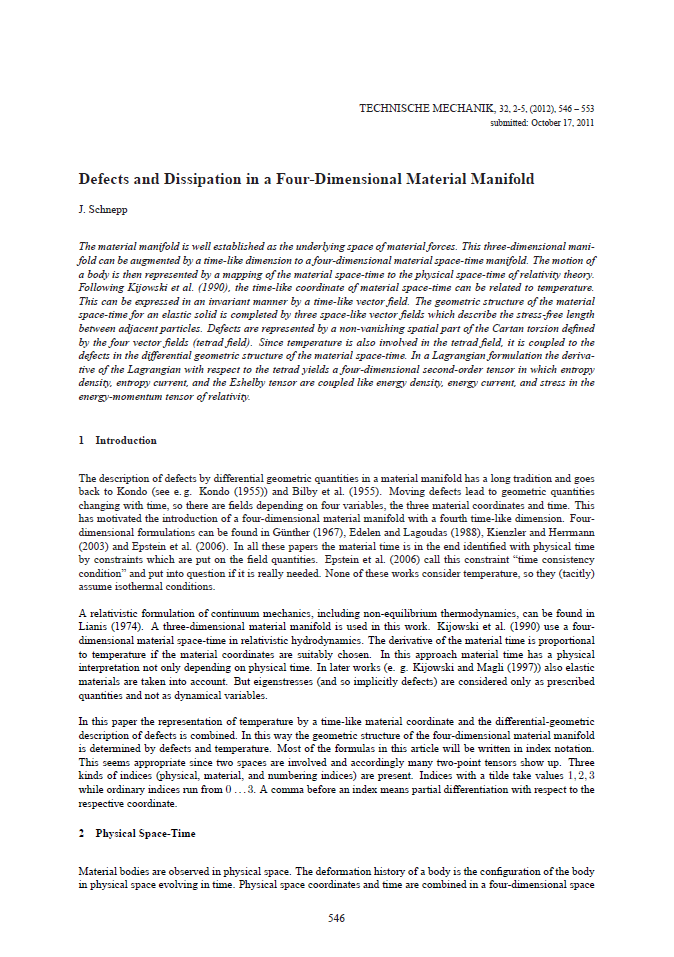Defects and Dissipation in a Four-Dimensional Material Manifold
Abstract
The material manifold is well established as the underlying space of material forces. This three-dimensional manifold can be augmented by a time-like dimension to a four-dimensional material space-time manifold. The motion of a body is then represented by a mapping of the material space-time to the physical space-time of relativity theory. Following Kijowski et al. (1990), the time-like coordinate of material space-time can be related to temperature. This can be expressed in an invariant manner by a time-like vector field. The geometric structure of the material space-time for an elastic solid is completed by three space-like vector fields which describe the stress-free length between adjacent particles. Defects are represented by a non-vanishing spatial part of the Cartan torsion defined by the four vector fields (tetrad field). Since temperature is also involved in the tetrad field, it is coupled to the defects in the differential geometric structure of the material space-time. In a Lagrangian formulation the derivative of the Lagrangian with respect to the tetrad yields a four-dimensional second-order tensor in which entropy density, entropy current, and the Eshelby tensor are coupled like energy density, energy current, and stress in the energy-momentum tensor of relativity.





